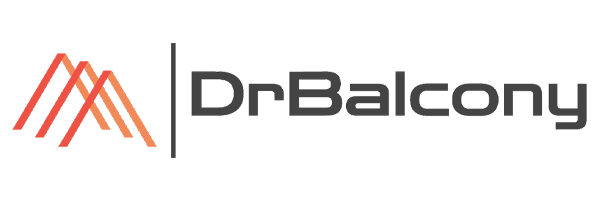Common Balcony Violations Under SB326 and SB721 and How to Avoid Them

Table of Contents
Ensuring Compliance with SB326 and SB721
Ensuring the safety and compliance of balconies in multifamily residential properties is paramount, especially under California’s SB326 and SB721 regulations. These laws mandate regular inspections to identify and rectify common violations that could jeopardize occupant safety. Understanding these frequent issues and implementing preventive measures is essential for property owners and managers.
Understanding SB326 and SB721 Regulations
Senate Bill 721 (SB721) and Senate Bill 326 (SB326) were enacted to enhance the safety of exterior elevated elements (EEEs) in California.
- SB721 applies to multifamily rental properties with three or more units, requiring inspections of EEEs every six years. The initial inspection deadline is January 1, 2026.
- SB326 targets condominiums and common interest developments, mandating EEE inspections every nine years, with the first due by January 1, 2025.
These regulations aim to prevent accidents by ensuring structural integrity and compliance of balconies and similar structures.
Common Balcony Violations
Identifying prevalent balcony violations can aid in proactive maintenance and compliance. Common issues include:
1. Improper Drainage
Inadequate drainage systems can lead to water accumulation, causing structural damage over time. Blocked or absent drainage can result in water pooling, leading to deterioration of materials.
Prevention: Regularly inspect and clean drainage systems to ensure they function correctly. Install appropriate drainage solutions to direct water away from structural components.
2. Structural Deterioration
Exposure to the elements can cause materials like wood and metal to degrade, leading to compromised structural integrity. Signs include spalling, cracking, rust, or rot.
Prevention: Conduct routine inspections to detect early signs of wear. Implement protective measures such as sealing, painting, or using weather-resistant materials.
3. Unsecured or Damaged Railings
Loose or damaged railings pose significant safety hazards, increasing the risk of falls.
Prevention: Ensure all railings are securely fastened and free from damage. Replace or repair any compromised sections promptly.
4. Unpermitted Modifications
Unauthorized alterations, such as enclosing balconies or adding heavy fixtures, can affect structural integrity and violate building codes.
Prevention: Obtain necessary permits before making modifications. Consult with professionals to ensure changes comply with safety standards and regulations.
5. Improper Storage
Storing heavy items or flammable materials on balconies can lead to structural stress and fire hazards.
Prevention: Educate residents on appropriate balcony use, emphasizing weight limits and prohibiting storage of hazardous materials.
Ensuring Compliance with SB326 and SB721
To adhere to SB326 and SB721 regulations and avoid common violations:
- Schedule Regular Inspections: Engage licensed professionals to perform thorough assessments of all EEEs within the mandated timeframes.
- Document Maintenance Activities: Keep detailed records of inspections, repairs, and maintenance to demonstrate compliance and track the condition of structures over time.
- Educate Residents and Staff: Provide training and resources to ensure all parties understand proper balcony use and the importance of reporting potential issues.
- Address Repairs Promptly: When inspections reveal deficiencies, prioritize repairs to mitigate risks and comply with legal obligations.
Contact DrBalcony for a professional inspection!
Ensure the safety of your balcony and living space with DrBalcony – We’re a Tech Engineering firm that specializes in California SB326 & SB721 balcony inspections. Over 300+ completed projects in California.
Request A Free EstimateClick To CallPartnering with Professionals
Collaborating with experienced professionals, such as DrBalcony, ensures that inspections and maintenance are conducted to the highest standards. Their expertise in SB326 and SB721 inspections can help property owners navigate compliance requirements effectively.
Regular maintenance and adherence to SB326 and SB721 not only fulfill legal responsibilities but also safeguard residents and preserve property value. Proactive management of balconies and other exterior elevated elements is a critical aspect of responsible property ownership.
For expert assistance with balcony inspections and compliance, contact DrBalcony today to ensure your property meets all safety and regulatory standards.
FAQ Section: Top Questions & Answers
My property is well-maintained. Do I really need SB-326/SB-721 inspections?
YES! Even with excellent maintenance, hidden issues can develop due to construction errors, material flaws, or severe weather exposure. Inspections are about ensuring those don’t turn into major problems.
Our balconies were inspected a few years ago – isn’t that enough?
Unfortunately, no. California laws mandate inspections on a set schedule, often every 6 years. Deterioration can happen quickly, making regular assessments essential.
Can I use my regular handyman for the balcony inspection?
It’s not recommended. Unless they hold specific licenses (architect, structural engineer, etc.) their inspection won’t be considered valid for SB-326/SB-721 compliance.
What if the inspection uncovers major issues?
First, don’t panic! Early detection often means less extensive (and expensive) repairs are needed. Work with your inspector to prioritize fixes, and explore if they offer repair services for a streamlined solution.
I’m worried about the cost of inspections. Are there any resources to help?
Start by getting detailed quotes from multiple companies. Factor in that proactive inspections help you avoid even bigger costs down the line due to neglected problems. Some property management associations offer guidance on budgeting for balcony compliance.
